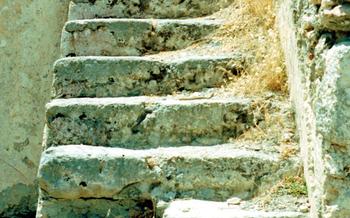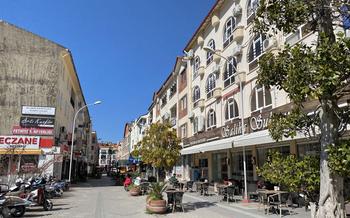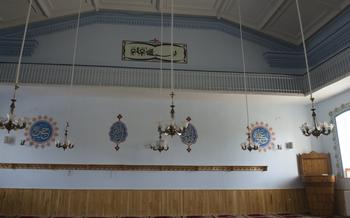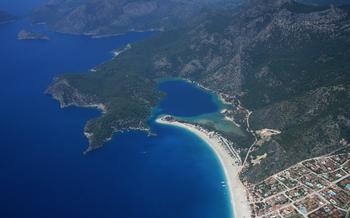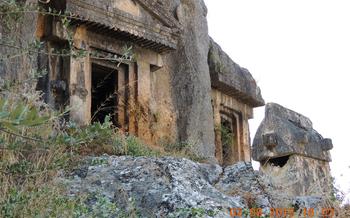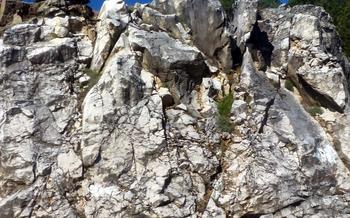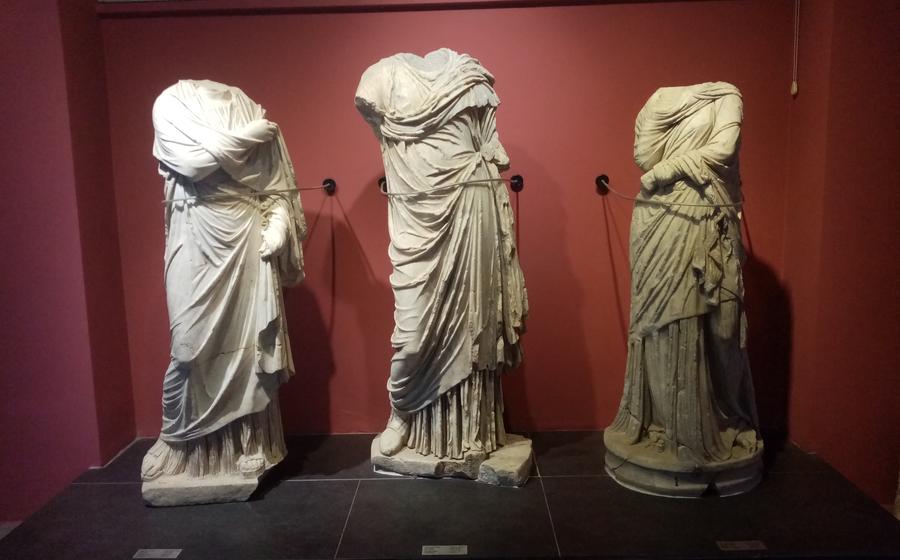
Fethiye Museum
- Historical Background
- Location and Accessibility
- Admission and Hours
- Museum Layout and Exhibits
- Lycian Hall
- Byzantine Hall
- Ottoman Hall
- Ethnographic Hall
- Children's Hall
- Museum Shop
- Guided Tours
- Accessibility for Disabled Visitors
- Photography and Videography
- Insider Tip
Historical Background
The Fethiye Museum stands as a testament to the rich and diverse history of Fethiye, a captivating coastal city nestled on the turquoise waters of the Mediterranean Sea. In ancient times, Fethiye was known as Telmessos, a prominent city-state of the Lycian League. The Lycians, renowned for their seafaring skills and cultural achievements, left an indelible mark on the region, and their influence can be vividly seen in the museum's collection. The artifacts displayed within the museum's walls narrate the captivating story of Fethiye's past, from the Lycian era to the Byzantine and Ottoman periods, providing visitors with a glimpse into the lives and cultures of those who shaped this remarkable city.
Location and Accessibility
The Fethiye Museum is conveniently situated in the heart of Fethiye, a charming coastal town in the Muğla province of Turkey. Its exact address is Hükümet Caddesi, Fethiye Merkez, 48300 Fethiye/Muğla. To reach the museum using GPS, simply set your destination to the provided coordinates: 3644874, 212839
Transportation to Fethiye is a breeze, with the town boasting excellent connectivity to major cities and towns in the region. Regular buses operate from nearby cities like Antalya, Denizli, and Muğla, making it easy for visitors to embark on a day trip to Fethiye. Once in Fethiye, the museum is within easy walking distance from the town center, allowing you to soak in the vibrant atmosphere as you make your way there.
Admission and Hours
Admission to the Fethiye Museum is quite affordable, with regular tickets priced at a reasonable rate. Students, seniors, and families can take advantage of discounted rates, making it an accessible attraction for all. It's worth noting that the museum offers free admission on certain days of the week or during specific events, so be sure to check their website or inquire locally for up-to-date information.
The Fethiye Museum follows a regular operating schedule, typically opening its doors from morning until evening. However, it's always a good idea to check their website or contact them directly to confirm their hours of operation, as they may vary slightly depending on the season or special circumstances. The museum is closed on Mondays like many other museums in Turkey.
Museum Layout and Exhibits
The Fethiye Museum boasts a well-organized layout, guiding visitors through different sections and galleries that showcase the diverse artifacts from the region's rich history. As you enter the museum, you'll find yourself in the main hall, which provides an overview of the museum's collection and its significance. From here, you can explore the various galleries, each dedicated to a specific era or theme.
Archeology Hall: This section houses an impressive array of artifacts from Fethiye's ancient past, including pottery, tools, and sculptures that shed light on the daily lives and customs of the region's early inhabitants.
History Hall: In this gallery, you'll learn about the fascinating history of Fethiye, from its founding as Telmessos to its transformation into the vibrant city it is today. Maps, documents, and interactive displays bring the region's past to life.
Art Hall: This section showcases a collection of paintings, sculptures, and other works of art created by local and regional artists, offering a glimpse into the cultural and artistic heritage of Fethiye.
Natural History Hall: Discover the diverse flora and fauna of the region in this gallery, which features exhibits on the local ecosystem, including marine life, birds, and reptiles. Interactive displays provide insights into the delicate balance of nature.
Children's Hall: Designed specifically for younger visitors, this interactive and engaging section features hands-on exhibits, games, and activities that make learning about Fethiye's history and culture fun and exciting.
Lycian Hall
The Lycian Hall of the Fethiye Museum is dedicated to the ancient Lycian civilization that flourished in the region from the 5th century BC to the 2nd century AD. The Lycians were known for their advanced culture, remarkable artistic achievements, and elaborate burial customs.
Among the highlights of the Lycian Hall are the impressive sarcophagi, intricately carved with scenes from mythology, daily life, and hunting expeditions. These sarcophagi provide valuable insights into the beliefs and customs of the Lycian people.
Another notable exhibit is the jewelry collection, which showcases exquisite pieces crafted from gold, silver, and gemstones. The intricate designs and delicate craftsmanship of these ornaments reflect the Lycian's love of beauty and artistry.
The hall also features a collection of pottery, including both utilitarian and decorative items. These vessels offer a glimpse into the daily lives of the Lycians, as well as their trade connections with neighboring regions.
Overall, the Lycian Hall provides a fascinating glimpse into the rich history and culture of this ancient civilization, allowing visitors to appreciate the enduring legacy of the Lycians in the region.
Byzantine Hall
The Byzantine Hall of the Fethiye Museum takes visitors back in time to the era of the Byzantine Empire, which ruled the region from the 4th to the 15th century AD. This section of the museum showcases artifacts and artwork that provide a glimpse into the rich cultural and religious heritage of the Byzantine period.
Among the notable exhibits in this hall are stunning mosaics and frescoes that once adorned the walls of Byzantine churches. These intricate artworks depict biblical scenes, saints, and religious symbols, offering a glimpse into the spiritual world of the Byzantines.
Other highlights include religious objects such as crosses, icons, and liturgical vessels. These artifacts provide a tangible connection to the religious practices and beliefs of the Byzantine people.
Ottoman Hall
The Ottoman Hall showcases the profound impact of the Ottoman Empire on Fethiye and the surrounding region. It houses a collection of artifacts that provide a glimpse into the daily lives and customs of the Ottoman people who once called this land home. Visitors can marvel at intricate textiles, beautifully crafted pottery, and gleaming weapons that were integral to Ottoman culture. These objects not only serve as historical relics but also offer a deeper understanding of the empire's artistic prowess and social fabric.
Ethnographic Hall
The Ethnographic Hall of the Fethiye Museum offers a captivating journey into the rich cultural heritage and traditional way of life of the local people. This section of the museum showcases a diverse collection of artifacts and exhibits that provide insights into the customs, beliefs, and daily life of the region's past inhabitants.
Visitors can explore displays of traditional costumes adorned with intricate embroidery and vibrant colors, reflecting the region's unique fashion sense. Tools and implements used in agriculture, fishing, and other traditional occupations offer a glimpse into the livelihoods and skills of the local people. Household items such as pottery, utensils, and furniture recreate the domestic spaces of the past, providing a tangible connection to the region's history.
The Ethnographic Hall also features exhibits on local crafts and handicrafts, highlighting the artistic talents and creativity of the region's artisans. Visitors can admire intricate carpets, woven textiles, and handmade jewelry, each piece a testament to the skill and artistry of the local craftspeople.
Through these exhibits, the Ethnographic Hall celebrates the cultural diversity and rich traditions of the Fethiye region, offering visitors a deeper understanding of the local way of life and its evolution over time.
Children's Hall
The Fethiye Museum also features a dedicated Children's Hall, designed to provide a fun and educational experience for young visitors. This interactive space is filled with engaging exhibits that capture children's imaginations and help them learn about history and culture in a playful way.
The Children's Hall features a variety of hands-on activities and games that allow children to explore the museum's collection and local history in a hands-on way. They can dress up in traditional costumes, play archaeological games, and solve puzzles that teach them about the different cultures that have shaped the region.
Parents and educators will appreciate the educational value of the exhibits, which are designed to spark children's curiosity and encourage them to ask questions about the past. The Children's Hall is a great place for families to spend time together and create lasting memories while learning about the rich history and culture of Fethiye.
Museum Shop
The Fethiye Museum features a well-stocked museum shop that offers a variety of souvenirs, books, and replicas related to the museum's collection and the local culture. Visitors can find unique and authentic items to commemorate their visit, including replicas of ancient artifacts, traditional Turkish handicrafts, and books on local history and archaeology. The museum shop also offers a selection of children's books and educational toys, making it a great place to pick up a gift for a young history enthusiast. By purchasing items from the museum shop, visitors can not only take a piece of the museum home with them but also support the museum's ongoing efforts to preserve and promote the cultural heritage of the region.
Guided Tours
The Fethiye Museum offers guided tours in various languages, including English, German, French, and Turkish. Taking a guided tour is an excellent way to delve deeper into the history and significance of the museum's artifacts. Experienced guides provide insightful explanations, anecdotes, and historical context that bring the exhibits to life.
Guided tours typically last around an hour and cover various sections of the museum, including the Lycian, Byzantine, Ottoman, and Ethnographic halls. Visitors can learn about the Lycian civilization's unique culture and traditions, the influence of the Byzantine Empire on the region, the Ottoman Empire's impact on Fethiye, and the traditional lifestyle of the local people.
To book a guided tour, visitors can approach the museum's information desk or contact them in advance. Group tours are also available upon request, making the museum an ideal destination for educational trips, history enthusiasts, and anyone seeking a more enriching museum experience.
Accessibility for Disabled Visitors
The Fethiye Museum is committed to providing an inclusive and accessible experience for all visitors, including those with disabilities. The museum features a range of accessibility features to ensure that everyone can enjoy and learn from its exhibits.
Wheelchair users and visitors with limited mobility can easily navigate the museum's galleries and halls thanks to ramps and elevators. Accessible restrooms are also available throughout the museum.
For visitors who are deaf or hard of hearing, the museum offers assistive listening devices and captioning for videos and presentations. Staff members are also trained to communicate effectively with visitors who have hearing impairments.
The museum also provides tactile exhibits and descriptive labels for visitors who are blind or visually impaired. These features allow visitors to explore the museum's collection through touch and audio descriptions.
Visitors with disabilities are encouraged to contact the museum in advance to inquire about specific needs or accommodations. The museum staff is happy to assist in making arrangements to ensure a smooth and enjoyable visit for everyone.
Photography and Videography
The Fethiye Museum encourages visitors to capture their memories and share their experiences through photography and videography. However, to ensure the preservation of the artifacts and the comfort of other visitors, certain guidelines must be followed.
Flash photography is strictly prohibited within the museum's exhibits. The intense light emitted by flash can damage delicate artifacts and disturb the viewing experience of other visitors. Instead, visitors are encouraged to use natural light or low-light settings on their cameras to minimize any impact on the exhibits.
Tripods and other photography equipment are generally allowed, provided they do not obstruct the pathways or interfere with other visitors. Visitors should be mindful of their surroundings and ensure that their equipment does not cause any damage or inconvenience to others.
Videography is permitted in most areas of the museum, but visitors are kindly requested to keep their voices low and avoid blocking the views of other visitors. Filming for commercial purposes requires prior permission from the museum administration.
By following these guidelines, visitors can contribute to the preservation of Fethiye's rich cultural heritage while capturing their own unique memories of the museum's treasures.
Insider Tip
-
Best time to visit: Avoid peak tourist season (July-August) and public holidays for a quieter and more enjoyable experience. Consider visiting during spring or fall for pleasant weather and fewer crowds.
-
Combine with other attractions: Take advantage of Fethiye's rich cultural heritage by combining your museum visit with other nearby landmarks. Explore the ancient ruins of Telmessos, marvel at the stunning views from the Fethiye Castle, or enjoy a boat trip to the nearby Butterfly Valley and the Blue Lagoon.
